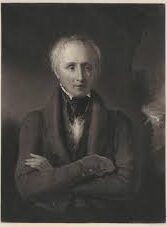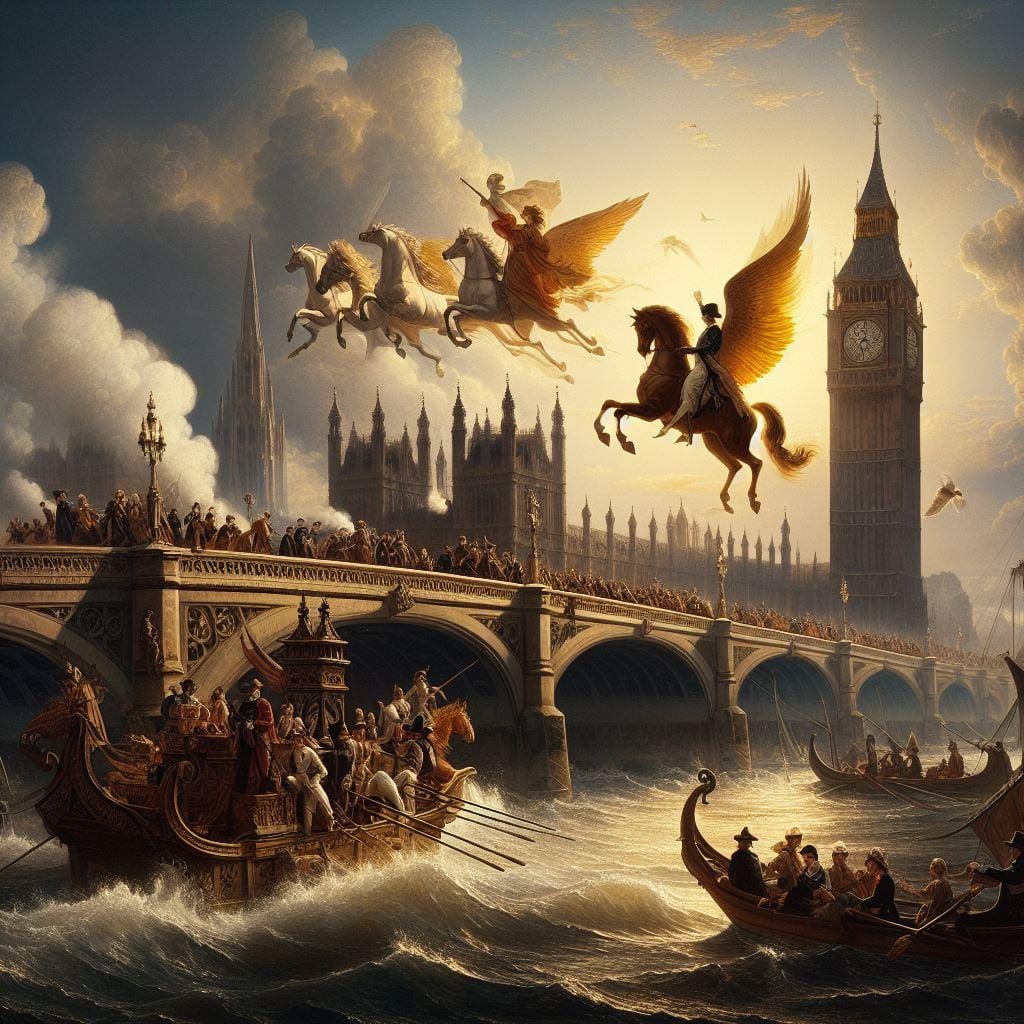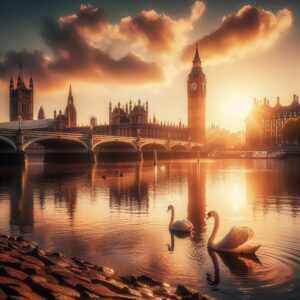English (H) DSC – 1
Introduction to Literary Studies
unit – 2 Reading Poetry, Part – 2
william wordsworth: ‘composed upon westminster bridge’
In this post, notes of Unit 2 (Reading Poetry – william wordsworth: ‘composed upon westminster bridge‘) from DSC – 1 (Introduction to Literary Studies) are given which is helpful for the students doing graduation this year.
Introduction to William Wordsworth and his historical context

William Wordsworth (1770-1850) was a prominent English Romantic poet who, along with Samuel Taylor Coleridge, played a crucial role in the development of the Romantic literary movement in the late 18th and early 19th centuries.
His poetry is often characterized by a deep connection with nature, a celebration of the ordinary, and an exploration of the inner emotional life.
Biographical Overview of William Wordsworth:
William Wordsworth was born on April 7, 1770, in Cockermouth, Cumberland, England.
He lost his mother at an early age, and his father passed away when Wordsworth was just 13.
Wordsworth attended Cambridge University, where he developed a keen interest in literature and poetry.
In 1790, he embarked on a walking tour of Europe, including the French Alps and Italy, experiences that greatly influenced his poetic sensibilities.
He formed a close friendship with fellow poet Samuel Taylor Coleridge, and together they published the famous collection “Lyrical Ballads” in 1798, a work often considered the manifesto of the Romantic movement.
| Related | |
|---|---|
| Introduction to versification and poetic syntax | the nature of drama summary | GJ Watson |
Historical Context:
French Revolution (1789-1799): The late 18th century was marked by significant social and political upheaval, particularly the French Revolution.
Wordsworth initially supported the ideals of the revolution, inspired by the ideas of liberty and equality. However, as the revolution took a more radical turn, he became disillusioned with its violence and excesses.
Industrial Revolution: Wordsworth lived during a time of profound societal change with the advent of the Industrial Revolution.
The transformation from agrarian and rural societies to industrialized urban centers had a profound impact on the environment and human experience. Wordsworth, in his poetry, often lamented the loss of nature and the simple, pre-industrial way of life.
Romantic Movement: Wordsworth, along with Coleridge, was a key figure in the Romantic literary movement. Romanticism emphasized individualism, imagination, and a deep connection with nature.

Wordsworth’s poetry, especially in works like “Lines Composed a Few Miles Above Tintern Abbey” and “I Wandered Lonely as a Cloud” (often known as “Daffodils”), exemplifies these Romantic ideals.
Lyrical Ballads (1798): The publication of “Lyrical Ballads” marked a departure from the neoclassical poetic conventions of the time. The collection included poems that focused on everyday language, common people, and the beauty of nature.
Wordsworth’s preface to the second edition, in which he articulated his poetic theory, is considered a seminal Romantic text.
Later Life and Poetic Legacy: In his later years, Wordsworth served as the Poet Laureate of the United Kingdom from 1843 until his death in 1850.
His poetry, particularly his exploration of the sublime in nature and the power of the human mind, has had a lasting influence on subsequent generations of poets.
William Wordsworth’s poetry continues to be celebrated for its emotional depth, connection to nature, and its role in shaping the Romantic literary tradition.
| Related | |
|---|---|
| Class by Gary Day Summary | it must flow a life in theatre habib tanvir summary |
Summary and analysis of Composed Upon Westminster Bridge

“Composed Upon Westminster Bridge is a sonnet written by William Wordsworth that reflects his awe and admiration for the city of London, as observed from Westminster Bridge on a quiet morning. Below is a summary and analysis of the Composed Upon Westminster Bridge:
Composed Upon Westminster Bridge Summary:
The poem begins with a declaration of the poet’s perception of the beauty of London as he stands on Westminster Bridge.
The setting is the early morning of September 3, 1802, and Wordsworth expresses his astonishment at the city’s tranquility and charm. The stillness of the city is contrasted with its usual bustle, as the people and their activities are not yet fully awakened.
Wordsworth describes the scene with vivid imagery, capturing the visual elements of the landscape. He praises the architectural marvels of the city, mentioning the towers, domes, and theaters.
The River Thames, which flows beneath the bridge, is portrayed as gliding at its own sweet will, untouched by the noise and commotion that will soon fill the city.
In the closing lines, Wordsworth reflects on the fleeting nature of this moment of serenity, recognizing that the scene will soon be transformed as the day unfolds. However, the impact of the sight remains etched in the poet’s mind as a memory of a sublime and pristine urban landscape.
| Related | |
|---|---|
| A.N. Kaul’s essay “A New Province of Writing” notes | Narratology Form and Function of Narrative summary |
Analysis of Composed Upon Westminster Bridge:

Nature and the City: Although Wordsworth is often associated with nature poetry, in this sonnet, he demonstrates an appreciation for the beauty of the cityscape. The poem suggests that the city, when observed in a particular state and at a particular time, can rival the sublimity of nature.
Contrast and Duality: The contrast between the stillness of the early morning and the bustling life that will later characterize the city creates a sense of duality. The poem captures a fleeting moment of peace before the city awakens, highlighting the transitory nature of beauty and calmness.
Imagery: Wordsworth employs vivid and picturesque imagery to convey the scene. The use of terms such as “smokeless air,” “glittering eye,” and “bare, open” emphasizes the clarity and purity of the morning. The poet’s attention to detail creates a visual representation of the city that lingers in the reader’s mind.
Celebration of the Urban Landscape: “Composed Upon Westminster Bridge” is a departure from Wordsworth’s usual focus on rural landscapes. Here, he celebrates the man-made structures of the city, praising its architectural grandeur. This reflects the Romantic idea that beauty can be found not only in nature but also in the creations of humanity.

The Sublime: Wordsworth’s description of London from Westminster Bridge elevates the cityscape to a sublime status. The stillness and beauty of the scene evoke a sense of awe and wonder, akin to the Romantic concept of the sublime in nature.
In summary, “Composed Upon Westminster Bridge” is a sonnet that captures a moment of profound beauty in an unexpected setting—the heart of a bustling city. Wordsworth’s ability to find the sublime in the urban landscape showcases his versatility as a poet and contributes to the broader themes of the Romantic movement.
| Related | |
|---|---|
| Where the Mind is Without Fear summary, Analytics, Poetic Devices | Emily Dickinson 341 After Great Pain Summary |
Theme and message of ‘Composed Upon Westminster Bridge’
The theme and message of “Composed Upon Westminster Bridge revolve around the beauty and tranquility of an urban landscape, specifically the city of London, as observed from Westminster Bridge.
The poem conveys a moment of awe and appreciation for the sublime qualities found in the heart of the bustling city. Here are the key elements of the theme and message:
Nature in the City:
Theme: One of the central themes is the harmonious blending of nature and the urban environment. Wordsworth, known for his affinity for nature, applies his poetic sensibilities to the cityscape.
The poem suggests that, under the right conditions, even a city can possess the beauty and tranquility associated with natural landscapes.
Message: The message is a departure from the conventional Romantic focus on rural landscapes. Wordsworth’s ability to find beauty in the architectural marvels, the river, and the morning stillness of London challenges the notion that nature exists only in rural or untouched settings.
Transitory Beauty:
Theme: The transient and fleeting nature of the observed beauty is a significant theme. The poem captures a specific moment in time, early in the morning, before the city awakens.
The temporary nature of this tranquility is emphasized, as the poet acknowledges that the scene will soon be disrupted by the hustle and bustle of daily life.
Message: The message revolves around the ephemerality of moments of beauty. Wordsworth suggests that such moments are precious because they are short-lived, and the awareness of their impermanence adds to their significance.
The Sublime:

Theme: The poem explores the concept of the sublime—the feeling of overwhelming awe and wonder in the face of something extraordinary. Wordsworth elevates the urban landscape to a sublime status, portraying the city as a place of grandeur and magnificence.
Message: The message is that beauty and sublimity can be found in unexpected places. By presenting London as a sublime entity, the poem challenges preconceived notions about where one can experience the profound and awe-inspiring aspects of life.
Human Creations and Natural Beauty:
Theme: The poem celebrates human creations, such as the architectural wonders of London, alongside the natural beauty of the scene. This theme aligns with the Romantic idea that human achievements can coexist harmoniously with nature.
Message: The message is a celebration of the achievements of humanity and the capacity for human creations to inspire a sense of wonder. Wordsworth’s appreciation for the “ships, towers, domes, theaters” underscores the idea that the city, with its man-made structures, is as worthy of admiration as any natural landscape.
In summary, “Composed Upon Westminster Bridge” conveys a profound appreciation for the beauty found in the heart of the city, highlighting the themes of nature in the urban environment, the transitory nature of beauty, the sublime, and the harmonious coexistence of human creations and natural elements.
The poem challenges conventional distinctions between rural and urban beauty, inviting readers to see the extraordinary in unexpected places.
| Related | |
|---|---|
| Composed Upon Westminster Bridge By William Wordsworth Summary | Short Summary of Tara by Mahesh Dattani |
Form and structure of ‘Composed Upon Westminster Bridge’
“Composed Upon Westminster Bridge, is a Petrarchan or Italian sonnet, a poetic form consisting of 14 lines divided into an octave (eight lines) and a sestet (six lines). The form of the poem plays a crucial role in conveying its themes and emotions. Here are the details of the form and structure of the poem:

Form: Petrarchan Sonnet
Octave (First 8 lines):
The octave presents the initial situation or problem.
In “Composed Upon Westminster Bridge,” the octave describes the tranquil scene of London as observed from Westminster Bridge early in the morning. The poet expresses his admiration for the beauty of the city.
Sestet (Last 6 lines):
The sestet provides a resolution, a twist, a commentary on the situation, or some form of reflection or conclusion.
In the sestet of this poem, Wordsworth reflects on the transient nature of the beauty he observes. He acknowledges that the stillness will soon be disrupted by the activities of the day but emphasizes the lasting impact of the scene on his memory.
Rhyme Scheme:
The rhyme scheme of a Petrarchan sonnet is usually ABBAABBA for the octave, followed by CDCDCD or CDECDE for the sestet.
In “Composed Upon Westminster Bridge,” the rhyme scheme of the octave is ABBAABBA, and the rhyme scheme of the sestet is CDCDCD.
Meter:
The poem is written in iambic pentameter, a metrical form where each line consists of ten syllables with a stress on every second syllable.
The use of iambic pentameter gives the poem a natural and flowing rhythm, contributing to its lyrical quality.
Enjambment and Caesura:
Wordsworth employs enjambment (continuation of a sentence without a pause beyond the end of a line) and caesura (a pause within a line) in the poem. This technique adds to the conversational and reflective tone of the sonnet.
Enjambment is used to connect ideas seamlessly, creating a smooth flow of thought throughout the poem.
Caesura is employed to create pauses within lines, allowing the reader to reflect on specific images and ideas.
Language and Diction:
The language is simple and evocative, reflecting Wordsworth’s emphasis on everyday language in his poetry.
The choice of words contributes to the vivid imagery, allowing readers to visualize the scene described on Westminster Bridge.
In summary, “Composed Upon Westminster Bridge” follows the Petrarchan sonnet form, utilizing octave and sestet divisions to present and reflect on the beauty of London.
The rhyme scheme, meter, and use of enjambment contribute to the poem’s overall structure and rhythm, while the language and diction enhance the sensory and emotional impact of the verses.
| Related | |
|---|---|
| John Milton On His Blindness summary | summary of pride and prejudice by Jane Austen |
Literary devices and language of ‘Composed Upon Westminster Bridge’
Composed Upon Westminster Bridge by William Wordsworth employs various literary devices and a distinctive language style to convey the beauty of London as observed from Westminster Bridge. Here are the details of the literary devices and language used in the poem:
Simile:
Example: “This City now doth, like a garment, wear”
In this line, the city is compared to a garment, suggesting that the beauty of London wraps around it like clothing.
Personification:
Example: “The river glideth at his own sweet will”
The river is personified, given human characteristics, as if it has a will of its own, gliding peacefully.
Metaphor:
Example: “This City now doth, like a garment, wear”
The entire city is metaphorically likened to a garment, emphasizing how the beauty of the city is worn or adorned.
Enjambment:
Example: “And all that mighty heart is lying still!”
Enjambment is used throughout the poem, creating a flowing and uninterrupted rhythm, contributing to the sense of calm and tranquility.
Imagery:
Example: “Ships, towers, domes, theaters, and temples lie”
The poem is rich in visual imagery, painting a vivid picture of the cityscape by mentioning specific elements like ships, towers, domes, theaters, and temples.
Hyperbole:
Example: “Earth has not anything to show more fair”
The statement that “Earth has not anything more fair” is a hyperbolic expression of the poet’s admiration for the beauty of London, emphasizing its unparalleled magnificence.
Alliteration:
Example: “Ne’er saw I, never felt, a calm so deep!”
The repetition of the “n” sound in “Ne’er saw I, never felt” creates a sense of calm and tranquility through alliteration.
Repetition:
Example: “Dear God! the very houses seem asleep”
The repetition of the exclamatory phrase “Dear God!” adds emphasis to the poet’s emotional response to the scene, underlining his awe.
Paradox:
Example: “And never did the sun more beautifully steep”
The notion that the sun can “steep” or immerse the city in beauty is paradoxical, as it combines the idea of sunlight and beauty in an unexpected way.
Plain Language:
Wordsworth employs plain and accessible language, adhering to his belief in using common language to communicate with a wide audience. This simplicity enhances the poem’s clarity and makes it relatable.
Diction:
The choice of words, such as “smokeless air,” “glideth,” and “bare, open,” contributes to the sensory and visual impact of the poem, enhancing the reader’s ability to picture the scene.
In summary, “Composed Upon Westminster Bridge” utilizes a variety of literary devices such as simile, personification, metaphor, enjambment, imagery, hyperbole, alliteration, repetition, paradox, and plain language. These elements work together to create a vivid and emotionally charged portrayal of the beauty observed by Wordsworth on Westminster Bridge.



